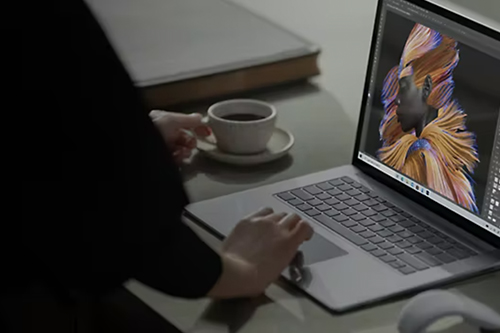



Microsoft Surface is focused on sustainability. From product development to packaging, the company aims to be carbon-negative, water positive, and zero waste by 2030. Microsoft’s commitment spans responsible sourcing, zero waste goals, repairability, and energy and operational efficiency for a brighter and greener tomorrow.

In this modern age, where being environmentally conscious is not just a moral duty but also a smart business decision, Microsoft firmly believes in balancing the needs of its customers with our planet's needs. Microsoft has set ambitious goals to become carbon-negative, water positive, and achieve zero waste by 2030, and that relies heavily on device sustainability.
This unwavering dedication to sustainability sets an example for others in the industry and will provide Microsoft Surface partners with a competitive edge. Let's look at what Microsoft Surface is doing to minimize its environmental impact and contribute to a more sustainable world.
Protecting and Preserving the Supply Chain
One of the standout aspects of Microsoft Surface's sustainability initiatives is its design process, which focuses on creating top-quality products while ensuring responsible sourcing from suppliers who adhere to strict ethical, human rights, and environmental standards. Microsoft envisions a future where all raw materials come from responsible sources without limitations on specific materials or locations. Additionally, they require their suppliers to adopt similar policies in their sourcing practices.
Driving Innovation Through Zero Waste Goals
The tech giant has made remarkable progress in fulfilling its commitment to achieving zero waste by reducing the environmental impact of their Surface devices and packaging. Microsoft set a target to achieve 100 percent recyclable packaging by 2030. It is designing hardware and software packaging to meet global environmental standards. Microsoft also invests in initiatives encouraging its partners and customers to prioritize sustainability.
When it comes to Surface devices, Microsoft takes the environment into consideration. It uses recycled and renewable materials in their design process to minimize the impact on our planet. A notable example is the Ocean Plastic Mouse, made with 20 percent recycled ocean plastic, making it the first consumer electronics product of its kind.
Reimagining the Product Lifecycle Through Serviceability
Promoting repairability is another crucial aspect of the sustainability story from Microsoft Surface. It supports initiatives that allow users to easily fix and upgrade their devices instead of contributing to the growing e-waste problem. The Surface Pro and Surface Laptop Studio are among the most repairable devices available, with replaceable displays, batteries, keyboards, and more. You can watch this video showcasing the serviceability features of the Surface Laptop Studio.
Improving Energy Efficiency at Every Level
Energy efficiency, responsible sourcing, and durability are crucial for Microsoft's Surface products. All Surface laptops and tablets are EPEAT gold-registered and ENERGY STAR certified, ensuring they prioritize energy efficiency and battery life.
On a larger scale, the company has committed to utilizing 100 percent renewable energy entirely in all of its data centers, buildings, and campuses by 2025. This bold decision showcases Microsoft’s dedication to addressing climate change and is an exemplary model for the entire tech industry to follow suit.
Promoting A More Sustainable World
From responsibly sourced materials to energy-efficient operations, Microsoft is taking the lead in driving towards a more environmentally sustainable future for everyone. In doing so, it is meeting present needs and ensuring a brighter and greener tomorrow for future generations.
Partners can contribute by helping their customers invest in Surface devices that prioritize integrity and sustainability throughout the entire product lifecycle—from design and supply chain processes to product usage and end-of-life management. Discover more about the range of sustainable Surface devices available for resale.